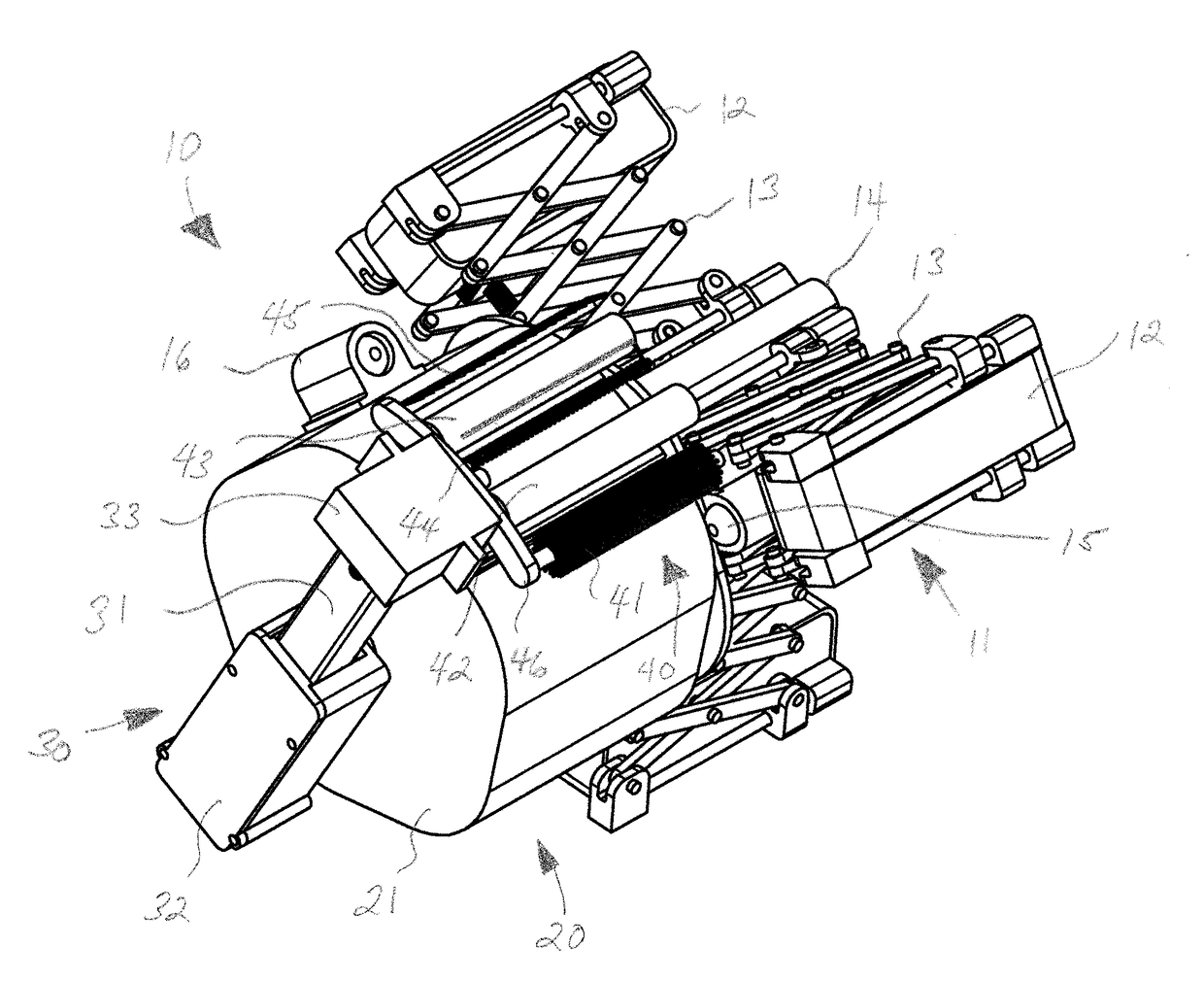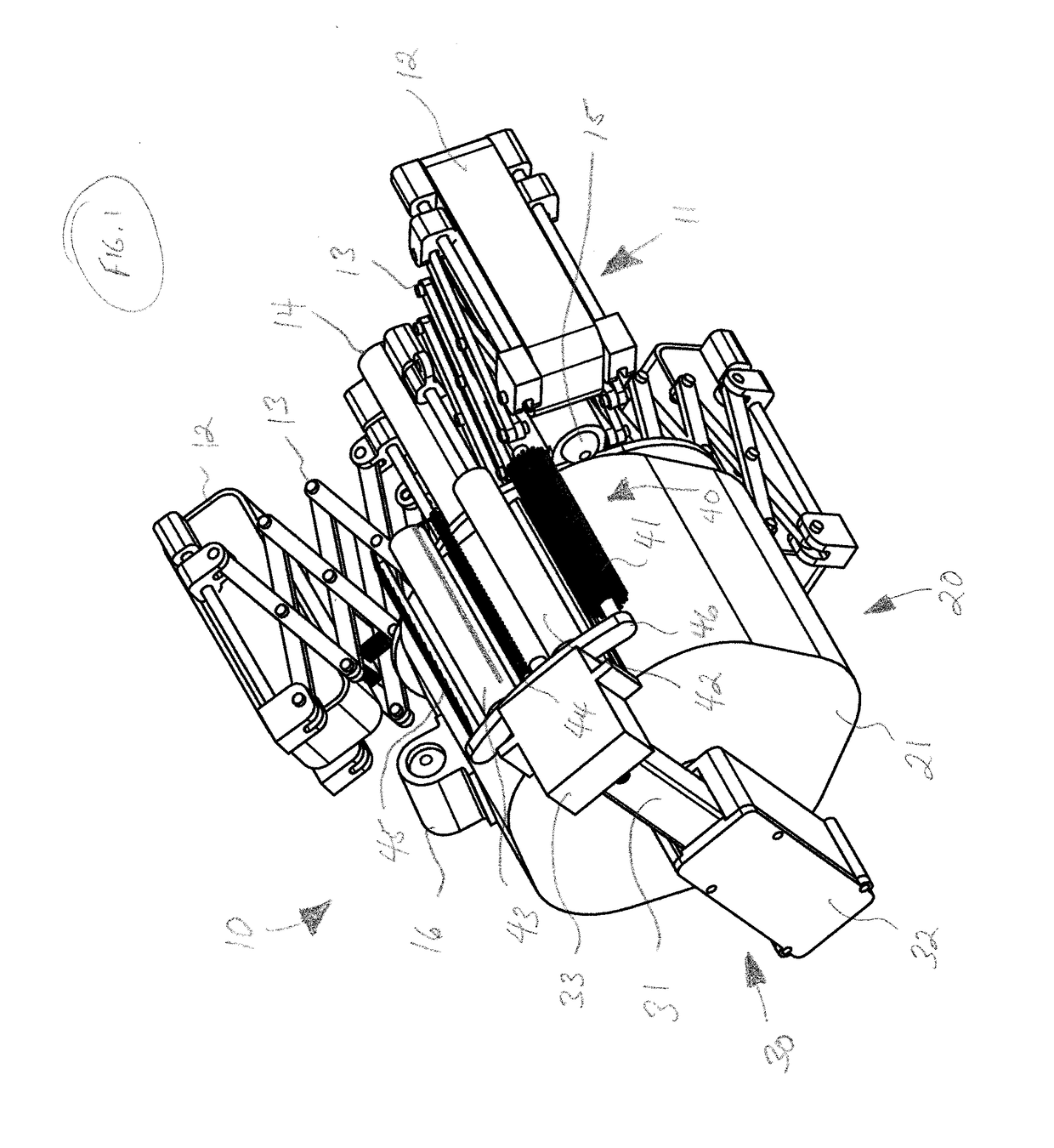Taping Apparatus, System and Method for Pipe Lining Applications
a technology of pipe lining and tape, applied in the field of tape, can solve the problems of pipe system degradation, less than optimum coverage and liner thickness, and fall below standards, and achieve the effects of preventing damage to the operation effect of valves, eliminating fatigue failure, and improving uniformity of thickness
- Summary
- Abstract
- Description
- Claims
- Application Information
AI Technical Summary
Benefits of technology
Problems solved by technology
Method used
Image
Examples
Embodiment Construction
[0020]With reference to the drawings, which are meant to be non-limiting as to the scope of the invention and are not to scale, the invention is shown and described in various embodiments. In a broad sense, the invention is a patching or taping apparatus, system and method to cover voids present in a pipe prior to application of a remediation lining to the interior of the pipe. The term “void” shall be taken herein to refer to cracks, perforations, depressions, joints or any other similar defective portions of the inner pipe wall.
[0021]After cleaning the pipe using conventional methods, such as blasting, pigging, etc., it is most preferred to cover any voids that would negatively impact optimal creation of the remedial pipe ling. To achieve the task a taping apparatus or robot 10 is sent into the pipe. This apparatus 10 can be semi-autonomous, in which case the apparatus 10 is connected to an umbilical cord which provides it with the required operational power. Alternatively, the ta...
PUM
| Property | Measurement | Unit |
|---|---|---|
| sizes | aaaaa | aaaaa |
| liquid | aaaaa | aaaaa |
| thickness | aaaaa | aaaaa |
Abstract
Description
Claims
Application Information
 Login to View More
Login to View More - R&D
- Intellectual Property
- Life Sciences
- Materials
- Tech Scout
- Unparalleled Data Quality
- Higher Quality Content
- 60% Fewer Hallucinations
Browse by: Latest US Patents, China's latest patents, Technical Efficacy Thesaurus, Application Domain, Technology Topic, Popular Technical Reports.
© 2025 PatSnap. All rights reserved.Legal|Privacy policy|Modern Slavery Act Transparency Statement|Sitemap|About US| Contact US: help@patsnap.com



